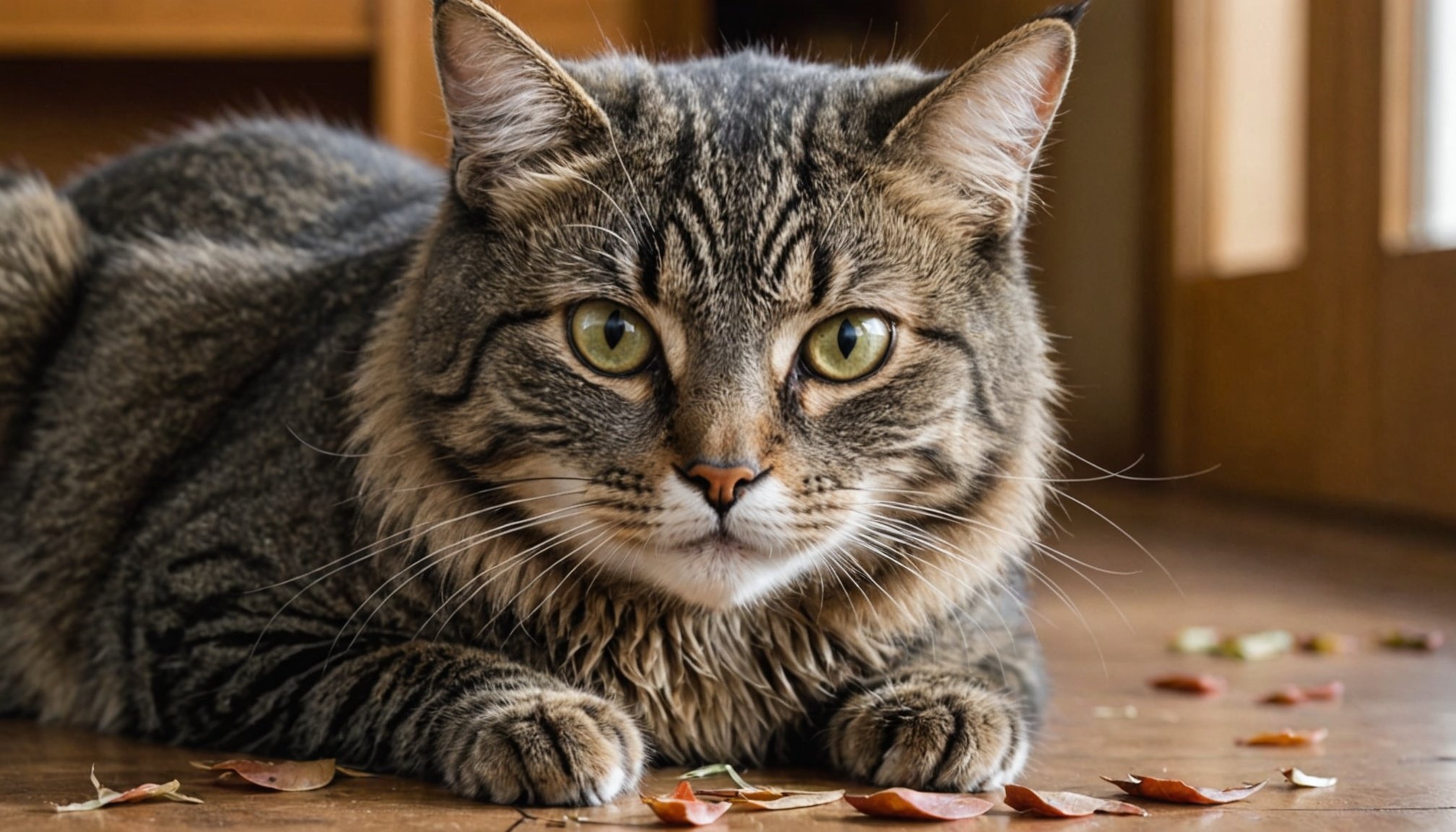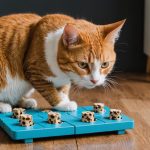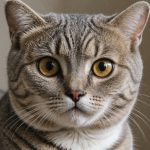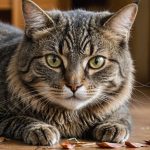Understanding Indoor Cat Behavior
Understanding indoor cat behavior is crucial for providing them with a fulfilling lifestyle. Cats, whether indoor or outdoor, retain their natural hunting instincts. Even though indoor cats don’t need to hunt for food, they inherently pursue play activities mimicking hunting, such as stalking and pouncing. These instincts are vital in preventing boredom and maintaining their mental well-being.
To cater to these instincts, stimulating indoor environments are imperative. Providing toys that simulate prey, like small balls or toy mice, can help engage a cat’s hunting drive. Interactive playtime with wand toys also fulfils their need to stalk and chase, offering a way to express these embedded behaviors.
Sujet a lire : Ultimate cat care: your essential guide to tracking feline breathing and identifying respiratory problems at home
Indoor cats may exhibit behavior differences from their outdoor counterparts. While both exhibit hunting instincts, indoor cats might engage more with toys and human interactions due to lack of real prey. Their play patterns are often more routine since they rely heavily on their owners to provide stimulation. Moreover, because they are safe from outdoor dangers, indoor cats may demonstrate more consistent behavior and relaxation at home. Ensuring an enriched indoor environment can lead to happier, healthier cats that fully express their natural instincts.
The Benefits of Enhancing Hunting Skills
Engaging in hunting activities offers numerous benefits for both physical health and mental stimulation. For indoor cats, mimicking hunting behaviors through play can significantly improve their physical fitness. Chasing and pouncing mimic their natural instincts, which enhances muscle tone, coordination, and cardiovascular health. Regular activity promotes a healthy weight, reducing the risk of obesity-related issues.
A voir aussi : Create a joyful diy puzzle feeder for your cat: a comprehensive step-by-step tutorial
When it comes to mental health, indoor cats greatly benefit from these activities. Engaging them in hunting simulations keeps their minds sharp and provides essential mental stimulation. The thrill of the “hunt” reduces boredom, anxiety, and stress. It encourages problem-solving abilities and keeps them mentally agile.
Moreover, enhancing hunting skills has long-term effects on overall well-being. Cats that regularly participate in such engaging activities exhibit improved mood and reduced behavioral problems. These activities can enhance their focus and concentration over time, fostering a more enriched and satisfying indoor life.
By understanding the profound physical and mental benefits of hunting activities, pet owners can better cater to their feline companions’ needs, ensuring their health and happiness are always prioritized.
Interactive Toys and Tools
Interactive cat toys are an excellent way to encourage natural hunting behaviours in your feline friend. Types of interactive toys that engage cats include those that move unpredictably or mimic prey, such as robotic mice or wand toys. These toys provide both mental and physical stimulation, keeping your cat entertained and fit.
When it comes to toy recommendations, there are several notable brands that stand out. Brands like PetSafe and Petstages offer a range of interactive cat toys tailored to various play styles and preferences. For example, PetSafe’s Dart Laser Toy projects random patterns that entice cats to chase, whilst Petstages’ Tower of Tracks provides a multi-level challenge with moving balls designed for hours of curiosity-driven play.
For those who enjoy a hands-on approach, DIY options are plentiful. Simple crafts using household items can transform into exciting, engaging activities for cats. Try creating a hidden treat puzzle with an egg carton or fashion a wand toy from a twig and feathers. These DIY projects not only save money but also personalise the play experience to suit your cat’s unique interests.
Puzzle Feeders and Treat Dispensers
Puzzle feeders and treat dispensers are innovative tools that cater to the natural hunting instincts of cats. By mimicking hunting behaviors, these devices encourage cats to forage for their food, turning mealtime into an engaging mental and physical activity. This not only satisfies their innate predatory skills but also provides valuable stimulation, promoting both physical and mental well-being.
One of the key benefits of using puzzle feeders is the support for slow feeding. Unlike traditional bowls, which allow cats to eat quickly, puzzle feeders slow down the eating process. This gradual approach to feeding is beneficial for health, as it helps prevent digestive issues like bloating, regurgitation, and obesity, contributing to overall wellness.
However, to achieve success with puzzle feeders, it’s essential to adopt effective feeding strategies. Start by introducing these devices gradually to your cat. Initially, you can combine familiar treats with feeders, enticing the cat to interact. As your cat grows more comfortable, slowly increase the feeder’s complexity. Patience is crucial; some cats embrace the change quickly, while others may need more time.
Ultimately, puzzle feeders and treat dispensers can transform mealtime into a rewarding experience, utilising cats’ natural instincts for a healthier lifestyle.
Safe Hunting Games for Indoor Cats
Ensuring indoor cats have engaging playtime is essential. Safe hunting games stimulate their natural instincts while ensuring a secure environment. One popular activity is using wand toys, which mimic the movements of prey and can be moved erratically to awaken a cat’s instinct to chase and pounce. These toys offer both exercise and mental enrichment, crucial for a cat’s well-being.
Integrate interactive play to foster your feline’s intelligence. Puzzle feeders can be filled with treats, transforming mealtime into an exciting challenge that hones their hunting skills. Laser pointers are fantastic for keeping cats on their toes, but be cautious: always end the game with a tangible object or treat to maintain their satisfaction.
Incorporate training techniques by rewarding desired behaviors, which not only entertains but also boosts their responsiveness. When engaging in such activities, supervision is paramount. This helps prevent accidents or ingestion of small toy parts.
Safety should remain the priority during each cat playtime session. Ensure toys are intact and free from small detachable components that can pose choking hazards. By fostering a stimulating play environment, you’re ensuring both the happiness and safety of your indoor cats.
Creating an Enriched Environment
Enhancing cat enrichment in indoor environments is essential for promoting natural feline behaviours. Cats are instinctively drawn to explore and climb, which can be accommodated by integrating vertical spaces and hiding spots within the home. These elements not only engage a cat’s curiosity but also offer safe retreats and vantage points, which are especially beneficial for indoor cats lacking outdoor access.
To further improve the habitat, consider the role of scent and sensory experiences in enrichment. Cats have a keen sense of smell, and introducing different scents can simulate outdoor conditions. This can be easily achieved with natural elements like catnip, or by rotating toys that emit different scents, keeping the cat’s environment stimulating and varied.
Lastly, an array of textures and materials can enhance their sensory experiences. By providing scratching posts, carpeted areas, and smooth surfaces, cats gain varied tactile experiences that are crucial for their overall well-being. Integrating these changes into your home can transform it into a nurturing space where a cat’s natural instincts are respected and encouraged, ultimately leading to a healthier and happier pet.
Expert Advice and Research-backed Strategies
Understanding and embracing your feline friend’s hunting behaviour can enhance their wellbeing. Cat behaviour research indicates that indoor cats often benefit from engaging activities that simulate hunting. According to experts, the absence of such stimulation can lead to behavioral issues and stress. Veterinarians and feline behaviourists consistently emphasise the importance of play to mimic natural hunting instincts.
Professional insights suggest incorporating toys that simulate prey to keep indoor cats mentally and physically engaged. Variety is crucial, as it prevents boredom; rotating toys routinely maintains their interest. Experts recommend interactive toys that move or make noise, as these closely mimic the natural chase and capture sequence cats experience in the wild.
Practical tips from experts also highlight the need for set playtimes, advocating for multiple short play sessions throughout the day. Introducing your cat to different textures and sounds can excite their natural curiosity and stimulate their hunting instincts. For example, crinkly paper or feathers on a string can spark engaging play sessions.
Incorporating these expert-backed strategies ensures your cat remains happy and healthy while indulging in their innate behaviours. This not only keeps them entertained but also promotes physical and mental health.











